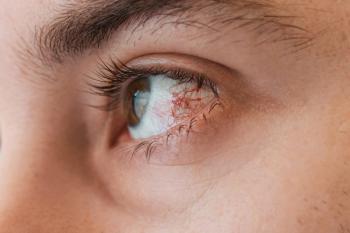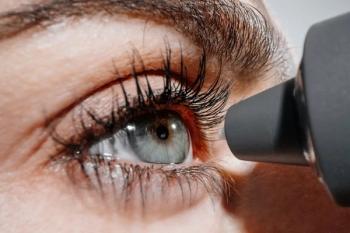
Robust dry eye assessment tool is found in compact survey
A one-page, five-question questionnaire, called the DEQ-5, accurately identifies patients with Sjögren's syndrome and other patient populations with dry eye.
Key Points
Bloomington, IN-The differential diagnosis between dry eye related to Sjögren's syndrome and other classes of dry eye is a continuing challenge for the practitioner.
"Effective treatment requires an understanding of the etiology of dry eye," said Robin L. Chalmers, OD, FAAO, clinical trials consultant and adjunct professor at the Indiana University School of Optometry, Bloomington. "One important factor that can indicate etiology is the progression of ocular surface symptoms over the course of the day.
For most eye-care practitioners (ECPs), the patient case history is the starting point for diagnosis and treatment. Therefore, Dr. Chalmers said, "the more accurately this interview can distinguish Sjögren's syndrome patients from others with dry eye, the more effective and appropriate treatment can be. Use of a short questionnaire can standardize the information captured in the case history."
An underlying cause
Approximately 15% of people aged more than 40 years experience dry eye, and Sjögren's syndrome is a frequent, serious underlying cause of the problem. Chronic inflammation of the lacrimal and salivary glands, a distinguishing clinical sign of Sjögren's syndrome, leads to dry eye and dry mouth. Patients with Sjögren's syndrome experience aqueous tear deficiency caused by reduced aqueous tear volume, flow, and turnover resulting from impaired lacrimal gland function.
"With the DEQ-5, we have streamlined a validated dry eye assessment tool, the [Indiana] Dry Eye Questionnaire, to make it easier to administer. We have selected the questions that best correlated with patient self-assessment of the severity of dry eye," Dr. Chalmers explained. "The next step was to determine whether the five questions would provide a quantitative tool for the assessment of ocular surface symptoms in dry eye according to groups with distinct clinical diagnoses. The right scoring tool will help determine who may require further biopsy testing due to a suspicion of Sjögren syndrome, for example."
The study population comprised 260 subjects from dry eye studies conducted in 2002 and 2005, including 48 asymptomatic controls and 212 subjects with clinically diagnosed dry eye. Among the dry eye subjects, 57 had Sjögren's syndrome by the American-European 2002 criteria, and 155 had dry eye of other etiology as diagnosed by their ECP. All subjects completed the full DEQ.
Daypart reporting
By asking patients to rate their symptom frequency and intensity at different times of day (scale of 1 to 4 for frequency and 1 to 5 for severity), the researchers designed the DEQ-5 with the flexibility to avoid some of the problems associated with other dry eye questionnaires. Many such surveys require only yes or no answers regarding symptom frequency, a strategy that can differentiate patients with dry eye from those who do not have dry eye, but "does not capture the intensity of symptoms," Dr. Chalmers explained.
The DEQ-5 also addresses the patient's experience of late-day ocular surface dryness and discomfort, the most distinguishing symptoms of dry eye related to Sjögren's syndrome and other types of dry eye. Other such surveys do not query changes that occur over the course of the day, she said.
Average DEQ-5 scores were 2.7, 10.5 and 14.0 for controls, non-Sjögren's syndrome dry eye patients and Sjögren's syndrome patients, respectively, on a scale of 1 to 24. Differences between groups was significant (p = 0.000).
"It was apparent that these five questions can discriminate not only between normal and dry eye subjects but also between Sjögren's syndrome dry eye and those with dry eye of other etiologies," Dr. Chalmers said.
Based on the results, the researchers propose criteria for the DEQ-5 of >6 for suspicion of non-Sjögren's syndrome dry eye and >12 for Sjögren's syndrome dry eye.
For clinicians, the results underscore the need to ask the right questions in making diagnosis and treatment decisions in dry eye patients, Dr. Chalmers said. "I feel confident recommending the use of the DEQ-5 in practice," she said. "A high score on the DEQ-5 may indicate the need to do specific clinical tests for dry eye."
Further research will determine the DEQ-5's validity in measuring response to treatment in prospective clinical trials.
Newsletter
Want more insights like this? Subscribe to Optometry Times and get clinical pearls and practice tips delivered straight to your inbox.



















































.png)


